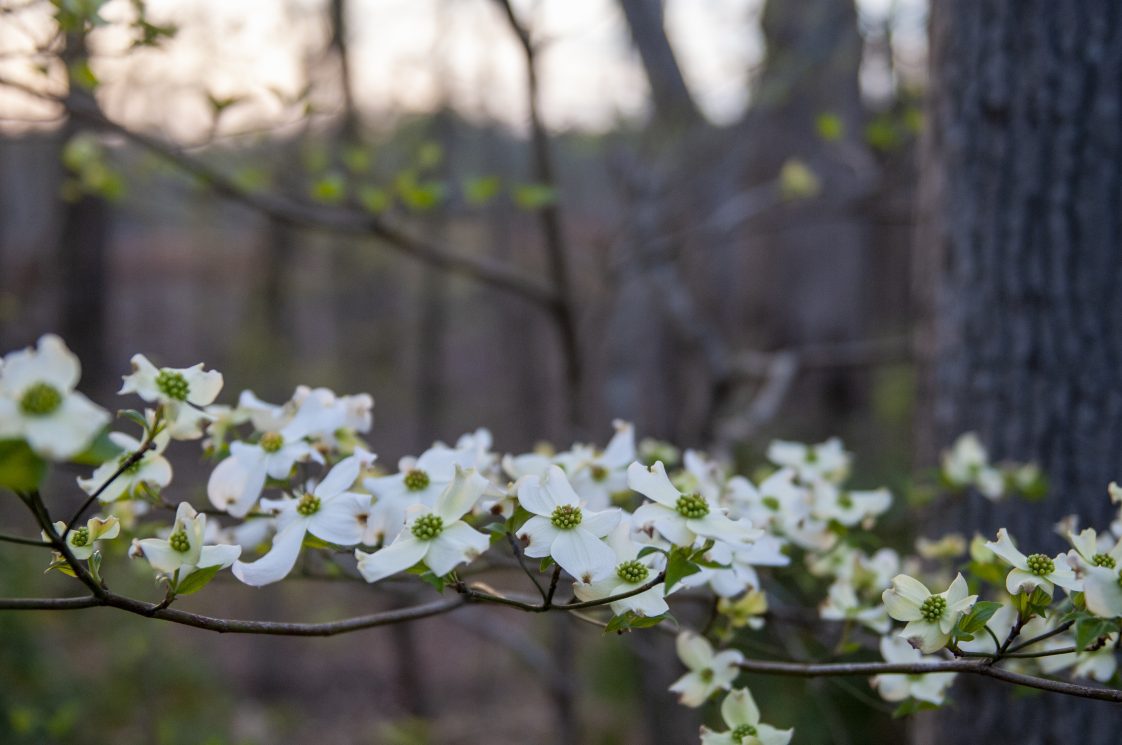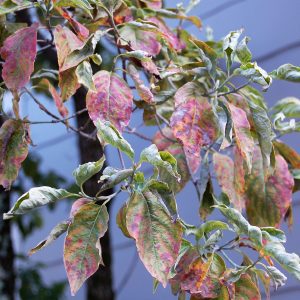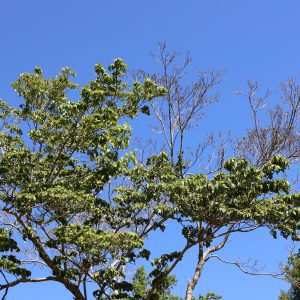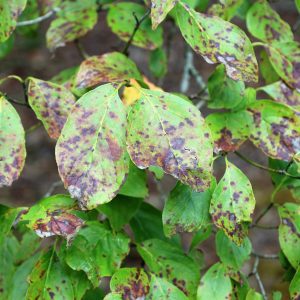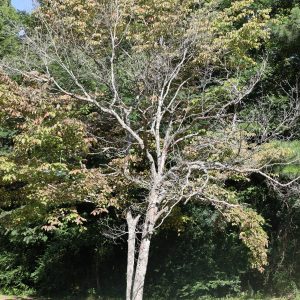Landscaping

It can be disheartening to see a prized and beloved landscape tree or shrub be damaged, fall, decline in health, or die. Over the last few years, many Alabama residents have observe the decline of the native flowering dogwood (Cornus florida), which is concerning on multiple levels.
Alabama Cooperative Extension System professionals first observed this decline in central Alabama a few years ago. When walking through a wooded area that had many older dogwoods growing amongst the mature forest, it was noticed that several of them had begun to experience dieback in the canopy. Also, random portions of the trees had died, typically the top growth and large branches. The death of these portions was apparent, because they had no leaves during the spring. Within two to three years, at least ten or more large dogwoods in the same area slowly got worse, died, and fell down. Unfortunately, the dogwood decline is not limited to just one location. Since the issue was first observed, Alabama Extension agents have examined dogwoods across the state for similar symptoms.
What is happening?
Several homeowners have called Extension agents out of concern that their dogwood tree is dying. There may be several causes of this type of decline.
Drought
Flowering dogwoods have shallow roots, and a lack of water can result in root dieback, which affects overall health and longevity. Severe drought stress is a major enemy and often kills mature trees, especially those living in dry and elevated habitats. A lack of consistent soil moisture harms the roots and affects tree health. Root dieback, damage, rot, and vascular issues will result in dieback in the top canopy of the tree and almost always lead to a slow death.
For example, Tallapoosa County recorded extreme to exceptional levels of drought in late 2007, early 2008, much of 2011 and 2012, and in the fall of 2016 and 2019. John Christy, Alabama’s state climatologist, said Alabama soils do not have a lot of water holding capacity. This is why Alabamians say a drought can happen within a week without significant rainfall. The lingering effects of these droughts over time could be why so many dogwoods are suffering in central Alabama.
Environmental Conditions and Disease
Jim Jacobi, an Alabama Extension plant pathologist, said the decline and death of dogwoods might be a combination of environmental conditions and diseases. Although it is a native species, flowering dogwoods are susceptible to several diseases, insect pests, and abiotic (nonliving) problems. Common diseases found on dogwoods in central Alabama are spot anthracnose, powdery mildew, and twig and branch cankers. Powdery mildew, which shows up as a white coating on the leaves, tends to be the most severe and widespread. Infections of this fungal disease cause a loss of water in the photosynthetic leaf area, which weakens trees and reduces growth. Under severe conditions, the new leaves can exhibit leaf scorch, twisting, distortion, and smaller-than-normal size. Older infected leaves often develop purple blotches that progress to dead areas.
Stress
The decline of dogwoods may also be contributed to a combination of these two major issues, which causes stress to the trees. Stressed trees may exhibit smaller-than-normal leaves and have wilting leaves, pale-green leaves, early fall coloration, and an overall poor appearance. Dogwoods that are stressed because of poor cultural and environmental conditions, especially drought, are more susceptible to diseases and pest problems. Various forms of stress can lead to decline and death.
Save the Dogwoods
What can be done to save the dogwoods? The following suggestions are things for homeowners and landowners to keep in mind as they care for dogwood trees:
Remember that flowering dogwoods are native understory forest trees that do best in partially shaded locations with moist, well-drained soil. They thrive in a soil pH range of 5.5 to 6.5. Under ideal conditions they may live up to 80 years. They do not tolerate full sun and don’t like hot and dry conditions or poorly drained soil. Under poor and stressful conditions, including dry summers and competing with grass for moisture, they will not live as long.
When planting a new tree, choose a dogwood cultivar that is disease resistant, with an emphasis on resistance to powdery mildew. ‘Appalachian Joy’, ‘Cherokee Brave’, ‘Jean’s Appalachian Snow’, ‘Karen’s Appalachian Blush’, ‘Kay’s Appalachian Mist’, ‘Weaver’s White’, and ‘Welch’s Bay Beauty’ are all powdery mildew resistant cultivars. Some of these cultivars are also spot anthracnose resistant.
Take additional precautionary steps to help the trees conserve moisture and have good, long-term growing conditions. Apply pine bark or pine straw mulch around the tree after planting and reapply each year. Do not pile mulch up along the trunk, as this can encourage rot and diseases. Mulching to the canopy drip line is highly recommended to protect the shallow feeder roots.
Irrigate and supplement water during hot and dry conditions. This is critical during the first year of establishment, as many plants die in late summer because of a lack of moisture and unestablished roots in the native soil. The soil around the tree should be moist but not saturated.
Apply a fungicide for protection and control at the first sign of mildew. Make applications during the spring, between late-April and early May. Reapply throughout the summer at 14-day intervals, according to the label directions. Recommended fungicides for powdery mildew are Spectricide Immunox (myclobutanil), Fertilome Systemic Fungicide (propiconazole), and MilStop (potassium bicarbonate). Neem oil is also an alternative, but avoid spraying oils in hot weather above 90 degrees F.
Remove dead branches and prune back to living wood. This will help remove potential cankers that can spread and lead to decay and further dieback. Selective pruning will also increase air movement and help with disease control within the tree canopy.
Happy, Healthy Dogwood Trees
While dogwoods may not be as prized as they have been in the past, with other ornamental trees—such as crape myrtles, flowering cherries, and red maples—being some of the preferred options, they are still considered natural beauties in Alabama. Homeowners and landscapers can help save these beautiful and legendary trees by planting and caring for them.
Healthy and happy dogwood trees are less likely to have diseases and experience decline and dieback. Take care of existing dogwoods through the spring and summer. However, in some cases, older dogwoods may be well protected and mulched but may not be able to overcome the years of stress. If these trees are lost, consider planting additional dogwoods in the fall, which is a great time to plant new and better cultivars. For more information on this and other home and garden questions, contact your county Extension office or visit www.aces.edu.

